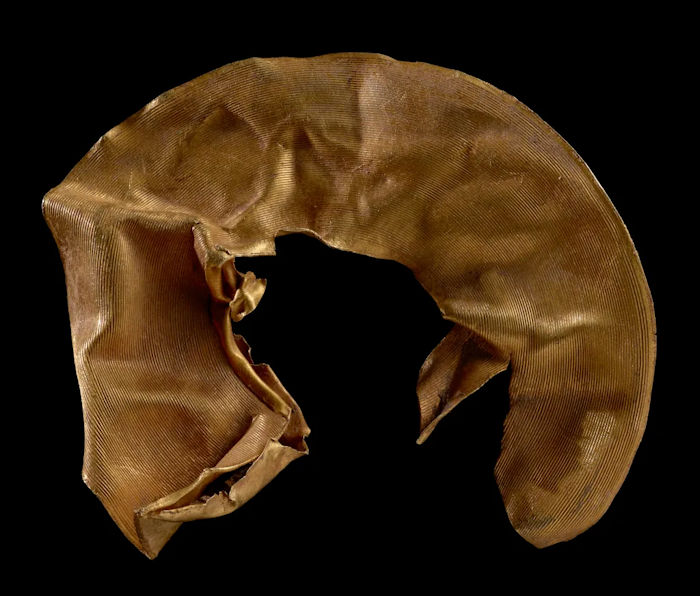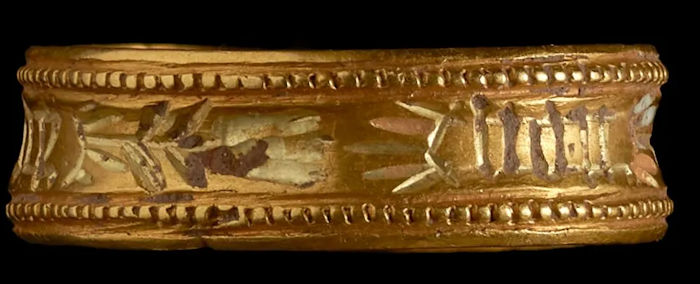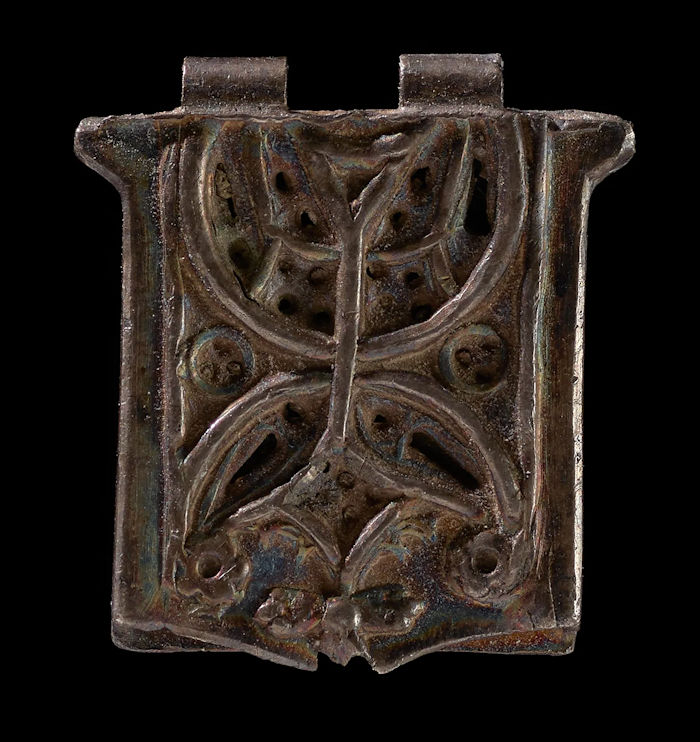Jan Bartek – AncientPages.com – Several beautiful Bronze Age and Medieval artifacts unearthed in Wales, UK, have been declared a treasure.
Four magnificent objects were discovered across Wrexham, with the remaining four coming from Conwy and Denbighshire.
While metal-detecting on a ploughed field in Holt Community, Wrexham, in 2018, Chris Wood came across a stunning gold lock-ring. Experts determined the gold lock ring dates to the Late Bronze Age and was made nearly three thousand years ago (1000-800 B.C.).

The gold lock-ring found in Wrexham. Image: National Museum of Wales
It is a bit of a guess, but it’s possible this outstanding high-status ornament may have been worn in the hair.
“The quality of the decoration on this artefact is impressive and it begs the question “how did its maker, an expert goldsmith, manage to expertly hand scribe 79 concentric circles on a gold sheet just four centimetres wide?”.
The resulting visual effect, created across the surface of this golden ornament, suggests this was once a highly valued possession. It would have marked out the wearer, female or male, to be a well-connected person of high standing within their community,” Adam Gwilt, Principal Curator for Prehistory at Amgueddfa Cymru – Museum Wales said.
“As soon as the finder contacted me about this object, I knew it was something special. Objects like this don’t turn up very often, and this is a first for me. It was really nice to be able to record something so beautiful, even in its slightly crumpled state,” Dr.Susie White, PAS Cymru Finds Officer for North Wales, told The Leader.
In 2021, Paul Davis, who was also investigating a field under pasture in Bronington Community, Wrexham, found a Medieval gold fede ring with his metal detector. The ring bears an inscription reading ‘de bon cuer’ which translates as ‘of good heart.’

The ring found by Paul Davis in Wrexham. Image: National Museum of Wales
Dated to the later 15th-century date, it forms part of a coin and finger-ring hoard previously reported as treasure, known as the Bronington Hoard, which was deposited after 1465 during the Wars of the Roses.
“Wrexham County Borough Museum and Archives has expressed an interest in acquiring this find, and the medieval gold fede ring, for their collection, following their independent valuation through the Treasure Valuation Committee,” The Leader reports.
Equally impressive find are the four silver coins of Charles I discovered on June 20, 2021 by Eric Faulkner, David Molyneux, Chris Jones and Gordania Mitchell in a field in Esclusham Community, Wrexham, during a metal-detecting rally.

Silver coins found in Wrexham. Image: National Museum of Wales
The coins are two shillings and two sixpences, and they were buried after 1641 during the English Civil Wars.
“A medieval silver buckle-plate, intricately decorated with an openwork design of Gothic tracery, and a silver penny of Richard II (1377-1399) were also declared treasure. The coin was found inserted into the open end of the buckle-plate, which would have been attached to the wearer’s belt or a silk girdle.

Medieval silver buckle-plate. Image: National Museum of Wales
Several finds dating to the early modern period were also among those declared treasure, including a silver coin of James I (1566-1625) and five of his son Charles I (1600-1649), as well as a late 17th-century or early 18th-century gold posy-ring with an inscription reading ‘Gods providence is our inheritance’,” The Past reports.
Several cultural centers and museums have expressed interest in acquiring these magnificent Bronze Age, and Medieval treasure finds. Time will tell where each of these precious artifacts ends up.
Written by Jan Bartek – AncientPages.com Staff Writer





